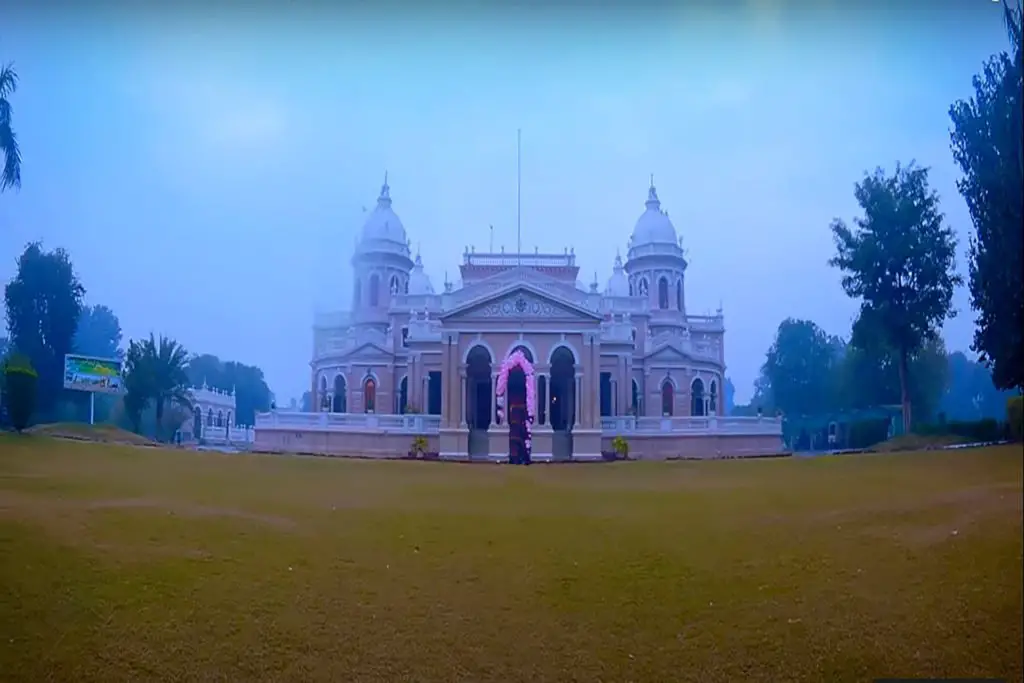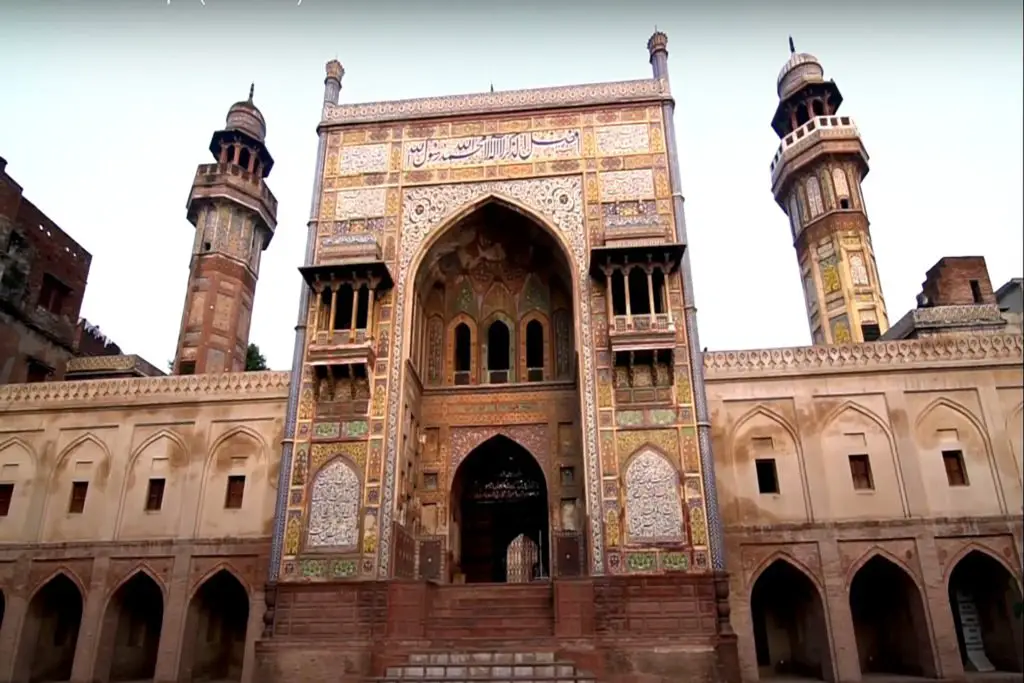Gulzar Mahal Bahawalpur is a palace in Bahawalpur City, Pakistan that was built between 1906 and 1909. It was commissioned during the reign of Sadeq Mohammad Khan V and was built as a residence for the women of the royal household of the former princely state of Bahawalpur, except for the queen.
The palace is surrounded by a large garden and is located in the Bahawalgarh palace complex in close proximity to the Darbar Mahal, Farrukh Mahal, and Nishat Mahal palaces.
Gulzar Mahal Bahawalpur Was Built by
Gulzar Mahal Bahawalpur was built during the time of Nawab Sadiq Muhammad Khan IV. Its beautiful architecture contains European influences just like the Noor Mahal.
Gulzar Mahal is also among the sites that remain off-limits to the general public in Bahawalpur. Named after the wife of Nawab Bahawal Khan V, it lies in a vast quadrangle, surrounded by high fortified walls and surrounded by lush greenery.
Noor Mahal has a long winding driveway, with a Shahi Buggy parked in front of the main building as a reminder of who drove through the land. Gulzar Mahal has no such royal carriage on display, but its circular driveway leading to the pale limestone building has a regal feel to it.
Is Gulzar Mahal open for Public
The palace has been leased by the armed forces since 1966 and is currently not open to the general public.
Gulzar Mahal Bahawalpur History
Completed in 1909, Gulzar Mahal was commissioned as a residence for the ladies of the royal family, although Nawab Bahawal Khan V did not live to see it take concrete form.
Said to be inspired by Noor Mahal, the exterior and interior of Gulzar Mahal display a similar fusion of Italic and Indo-Saracenic architectural elements. But the four round domes that sit majestically on the circular towers and the curved sides of the building lend Gulzar Mahal its own unique identity.
Corinthian columns abound, inside and out. Like Darbar Mahal, only the main hall and a few guest rooms are accessible to the general public.
Gulzar Mahal was the first building in Bahawalpur to be fitted with hidden electrical wiring and generate electricity using diesel generators.
While the grounds of Noor Mahal host groups of happy visitors basking in the spring sun, the sprawling lawns of Gulzar Mahal are eerily empty. The grounds are equally carefully landscaped; glass panels with Bahawalpur seals are similarly immaculate; the building is still preserved.
But there are no curious visitors. No one exclaims at the remarkable sight of the great marble hall; None admire the expansive views from the elevated terrace.
Tourism
Almost 150 years since its completion in 1875, Noor Mahal stands tall and proud, a tangible reminder of a bygone era of princely states and royalty.
If giving public access to one palace can boost tourism confidence as well as business for local people, imagine what adding Darbar Mahal and Gulzar Mahal to the list will do.
Hopefully, the Government of Pakistan and the Pakistan Tourism Department will take the initiative for the city of palaces Bahawalpur and will open these palaces to get the general public to take a closer look at these wonderful markers of history.







